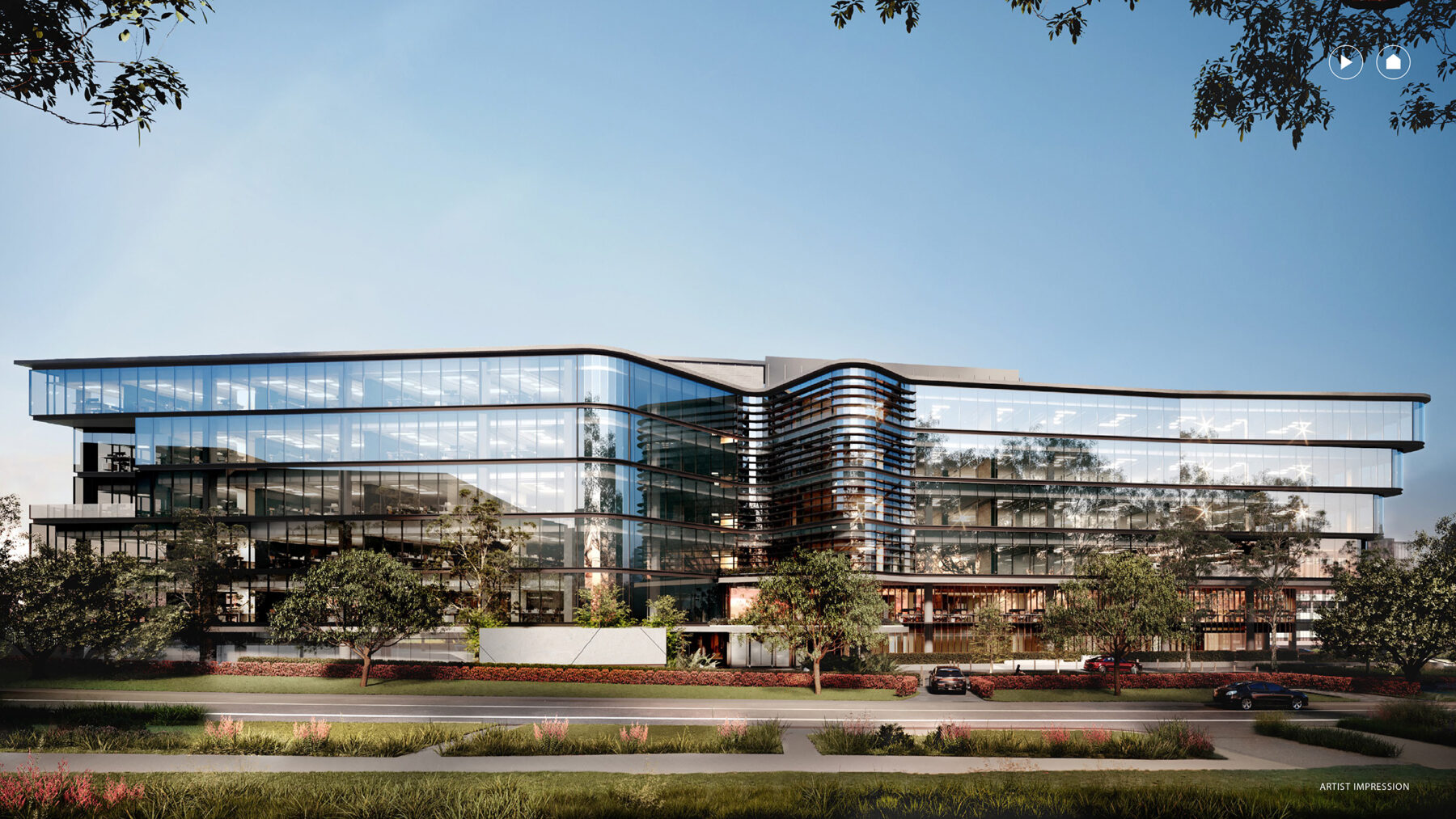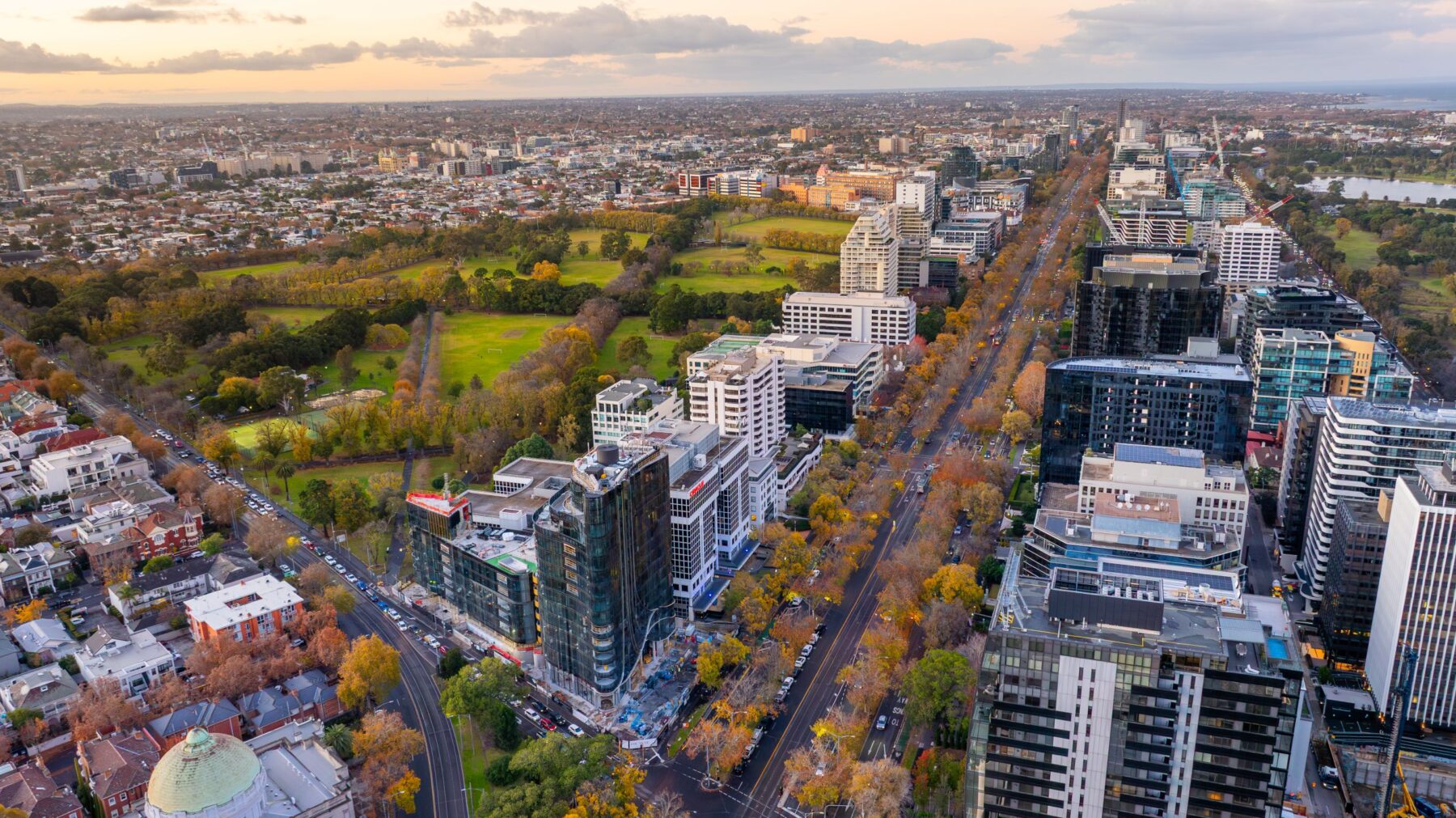Property Council of Australia office vacancy statistics February 2024
2 February 2024
To accompany the release of the latest Property Council of Australia Office Market Report, CBRE’s Office Leasing experts share their insights into the key trends emerging in Australia’s major office markets.
National overview:
Tim Courtnall, CBRE Advisory & Transaction Services Senior Managing Director, Pacific
“For the most part, the Australian office sector continues to demonstrate its resilience, with occupier confidence continuing to grow, war for talent and flight to quality trends driving demand for prime office space. The Brisbane, Perth, Sydney and Adelaide market enjoyed a strong Q4 with robust transaction volumes.
Although all markets have experienced longer decision-making timelines, it’s been pleasing to see the enquiry levels across all sectors, with professional services leading enquiry levels in most states. We expect with financial market stability over the last six months and lower inflation forecasts, 2024 should be reasonably strong from a transactions point of view, however we could see some unexpected headwinds in the second half of the year.”
Tom Broderick, CBRE Head of Office & Capital Markets Research, Australia
“The return to office continued to improve in Australia over the course of 2023. CBRE Research estimates that physical occupancy in Australian CBD’s improved to 70% of pre-COVID levels in Q3, up from 55% a year earlier. Major corporates are working harder to encourage people back into the office due to the collaboration and productivity benefits.
Certain office markets around Australia are recovering quicker than others from a rental perspective. In 2023, the Sydney CBD core, Brisbane CBD and Perth CBD observed strong effective rental growth due to strong leasing activity and an improved supply outlook. Melbourne and Adelaide lagged behind the rest of the country due to new supply, which pushed vacancy higher.
We expect stronger physical occupancy levels in 2024, which will likely end some of the contractionary activity that has occurred over the past few years. Many major corporates are likely to be nearing the end of their “right sizing” phase. In addition, high construction costs and declining capital values are likely to reduce medium term supply in Australia, which will contribute to lower vacancy rates.”
City by city agent commentary:
Sydney
Rachel Vincent, Head of Office Leasing, New South Wales
“The Sydney office market continued to stabilise throughout 2023, though conditions have differed across both building grade and geography. The market has been driven primarily by the ongoing flight-to-quality by occupiers and the recovery in office visitation rates in core submarkets. Sydney CBD office visitation rates reached 75% of pre-COVID levels towards the end of 2023, and CBRE expects this figure to peak near 90% over the next 12 months. This recovery is expected to lead to additional leasing activity in the new year.
Leasing demand in H2 2023 was most robust for higher grade assets in core locations across both the CBD and Metro submarkets. CBD enquiry volumes over the last 12-months were broadly in-line with pre-COVID levels, but down marginally compared to the record setting totals seen in 2021 and 2022. CBD enquiry volumes reached 421,000 sqm in 2023, representing a year-over-year decline of 9%. The most robust demand was seen from occupiers with requirements for 500sqm and below and 3,000sqm and above.
Sublease levels in the CBD began to increase over the middle portion of the year as larger occupiers gained conviction regarding their future office requirements. Many of these larger firms gave back a portion of their footprints as they determined certain job functions could be completed via hybrid work arrangements going forward.
While sublease levels ticked up over this time, the flow of new listings slowed as the year progressed, and sublease levels began to trend downward over the fourth quarter. It appears now that sublease volumes in the CBD have passed their peak. It’s expected that the Metro submarkets will experience a similar trend over the next 12 months, with sublease levels peaking closer to the middle of 2024.
Face rental rate growth accelerated over 2023 with the greatest increases seen in Prime stock in the CBD Core and North Sydney submarkets. While face rents have continued to climb, incentives have also remained persistently high, especially in geographies struggling with elevated vacancy rates. Areas of the city where incentives were able to hold steady saw effective rent growth over the second half of the year, whereas geographies where incentives continued to increase saw some effective rent declines in H2 2023.
While return-to-office and flight-to-quality will continue into 2024, we are also expecting that flight-to-value will be a growing trend in the new year. Given global economic uncertainty, a mixed business landscape domestically, and elevated interest rates, many occupiers are shifting to a more cautious approach to their real estate decisions. This is likely to drive demand for lower cost alternatives across the CBD and Metro Sydney market over the near term.”
Melbourne
Ashley Buller, Head of Office Leasing, Victoria
“The overall market vacancy for Q4 2023 increased, and we expect it to rise further in H1 2024 when Melbourne Quarter Tower is delivered.
Despite the increased vacancy, there has been significant deal activity in terms of volume and average deal size. Whole-floor and multi-floor tenants have been particularly active. Some notable trends include larger tenants moving from secondary street locations to prime locations, relocating to higher floors with better natural light and views, and commitments to new buildings for unique features like balconies, signage, and ESG credentials. We have also seen fringe tenants centralising and taking advantage of strong incentives and high-quality existing fit-outs in the Docklands area.
An increase in sublease space pushed the overall market vacancy higher, predominately due to two substantial additions. However, we now have good visibility over most of the largest occupiers in Melbourne, and unless there are any major unforeseen economic events, we do not expect any further major additions in sublease space. In addition, many large occupiers are now mandating office attendance and enforcing penalties for non-compliance. As momentum increases in this space, we anticipate some of the larger sublease availabilities to reduce in size or be withdrawn from the market.
While overall tenant demand was strong, there was a noticeable increase in 2000sqm + tenant activity, reflecting that finally more than three years on from COVID large occupiers have a much greater understanding of their occupancy needs and are prepared to make longer-term commitments. With continued economic uncertainty, occupancy costs will remain a focus for many occupiers and we anticipate several large renewals to take place in the next 6 months. Lease renewals for first-term tenants or tenants with good-quality existing fit-outs will continue to be highly compelling but there will continue to be the tussle with flight to quality alternatives resulting in a narrowing in the financial terms between stay put vs move.
Moving forward in 2024 we anticipate stable demand, continued centralisation and an overall increase in larger tenant demand and activity.”
Brisbane
Coen Riddle, Director, Office Leasing
“Demand for Brisbane office accommodation throughout 2023 was bolstered by strong demand from both state and federal government agencies as well as large corporates, particularly in the mining and consultancy sectors.
These decisions in most cases led to an upgrade in building quality as businesses look to align their long-term ESG targets and workplace strategies. Both the state and federal governments accounted for over 30% of transacted square metres in the CBD office which was propped up by the decanting of 41 George Street, which led to over 30,000sqm of net absorption entering the market.
Despite two years of strong demand from the SME sector, demand significantly reduced in 2023 as these businesses grappled with rising costs and interest rates. CBRE recorded a decline in transactions under 500sqm of over 50% in H2 2023 compared to H2 2022.
Pleasingly for owners of existing office assets, Brisbane continues to be characterised by a limited supply pipeline for the first time in over a decade. The market will likely see as few as three new developments completed in the next four years -205 North Quay, 360 Queen Street and Waterfront Brisbane. Take up for these developments has been strong and will therefore result in the majority of future supply being created by backfill from tenants such as Services Australia (140 Elizabeth Street, 143 Turbot Street, 140 Creek Street, 400 George Street), BDO (12 Creek Street), Hopgood Ganim (1 Eagle Street) and QIC (66 Eagle Street).
Multiple years of strong net absorption coupled with a forecasted constrained pipeline will result in CBD vacancy in 2024 trending toward single digits for the first time in over a decade. CBRE predicts Prime vacancy could hit as low as 7.9% by early 2025 and will likely ‘yo-yo’ in the high single digits over the next five years as vacancy remains tight due to the limited supply pipeline. Whilst B-grade has enjoyed consecutive years of vacancy under 10%, landlords in this sub-sector must remain proactive and seek creative ways to upgrade their assets to meet requirements for sustainable and amenity-rich office accommodation.
Beyond a falling vacancy rate, the Brisbane market has also experienced significant rental growth (7% y-o-y) across both CBD and inner-city areas; in some Premium assets, asking face rents to have increased by over 25% in under three years. Incentives remain high, however are beginning to retreat particularly for tenancies with quality existing fit outs where tenants can reduce their exposure to elevated construction costs. Continued demand for higher quality buildings coupled with limited supply over the next four years will lead to further effective rental growth via rising face rents and tightening incentive pools.
Despite uncertain economic conditions and the state government moving into ‘caretaker mode’ in 2024, the Brisbane office market is well positioned to exceed expectations noting the limited new development supply, significant interstate migration as well as white collar growth resulting from government-funded projects infrastructure and renewable energy projects.”
Gold Coast
Tania Moore, Senior Director, Office Leasing
“The Gold Coast market maintained low-level vacancy throughout the second half of 2023, supported by no new supply additions.
With limited spaces available over 500sqm we have seen minimal new tenants enter the market and most transactional activity has been the shuffling of existing tenants between buildings which may soften the ongoing take-up of current available space.
The majority of enquiry remains within the 100-200sqm occupiers with a focus on move-in ready suites and suites with long-term vacancy tend to be unfitted across all building grades. The current low vacancy levels have resulted in strong effective rental growth over H2 2023 with A and B-grade face rents increasing on average by over 10% and incentives reducing by 3%-5%, a trend we see continuing throughout 2024 due to no new supply additions for the foreseeable future.
Whilst there are DA approvals in place or underway it is unlikely any new projects will commence until such times as gross rents have reached more than $700/sqm and developers have confidence around construction delivery and pre-commitments from larger tenants.
2024 will prove challenging for occupiers with limited opportunities resulting in a compromise on location and/or building quality and landlords will be the ongoing benefactor of improved net income via increasing rents and reducing incentives.”
Adelaide
Andrew Bahr, Director, Office Leasing
“Despite headline vacancy, there is a limited supply of available new, high quality, fitted and non-fitted office space in Adelaide.
Three new developments – 83 Pirie, 60 King William and Festival Plaza – are all but fully leased. The only new development on the horizon is 50 Franklin Street where there is 25,000sqm of space under construction and due for completion in 2025.
Adelaide CBD buildings that were constructed post-2006 have a total vacancy of circa 6% with very few large contiguous spaces available.
There is significant activity in backfilling space that has been vacated in favour of new developments, both from a repositioning and deal perspective. Deals are likely to be very competitive in this space with incentives of more than 40%.
The small-to-medium enterprise market was quieter towards the end of 2023, as cost pressures increased with general enquiry down circa 25% compared to Q3. Conversely, we saw strong levels of enquiry from tenants over 1,000sqm.”
Perth
James Phelan, Director, Office Leasing
“The Perth office market went from strength to strength in 2023 with new enquiry, transaction levels and rental growth all exceeding the previous year.
Enquiry levels were at record levels, particularly the H1 2023, with CBD enquiry by volume 23% higher than the five-year average. Demand for office space is anticipated to remain strong in 2024 underpinned by expanding tenants from the mining, engineering, and government sectors.
We saw further prime rental growth of 5.2% in 2023 and incentives continue to tighten, particularly at the top end of the market. Flight to quality whilst always a trend in Perth, has intensified over the last 24 months with CBRE data showing that 52% of tenants relocating in the Perth CBD upgraded to higher quality buildings.
Employers continue to see value in buildings with high amenity as they continue to look for the best possible working environments for their staff.
Transaction levels were at an all-time with circa 120,500 sqm of new deals recorded over 500sqm in 2023, nearly 50% above the five year average. Buildings such as QV1, 9 The Esplanade, Alluvion, Exchange Tower and 108 St Georges Terrace continue to get close attention from prospective tenants.
Strong net absorption coupled with limited new supply in 2024 would suggest we are likely to see accelerated rental growth and incentive compression in 2024.
Suburban markets are mirroring trends in the CBD. With no new supply due to rising construction costs, high-quality existing suburban buildings with generous parking ratios will see significant rental growth.”
Canberra
Troy Markos, Director, Office Leasing
“2023 laid the roadmap for the next few years in the Canberra office market.
We experienced pent-up demand for new ‘premium’ products, which are not readily available with a number of tier one corporates approaching the market but opting to hold over or exercise options in anticipation of new supply forecast to land around 2026.
This was also backed by the more cautious placement of occupier capital, not wanting to invest in a new fit-out in a building deemed as a ‘sideways move’ especially if there was no immediate pressure to move if fit-out was still fit for purpose and the current landlord offered a competitive deal. This demand coupled with construction costs will set a new benchmark in face rents for the ACT.
The Commonwealth experienced a turbulent year with two major approaches to the market falling through with entities Department of Employment and Workplace Relations / Australian Electoral Commission who have re-approached the market and the Department of Infrastructure, Transport, Regional Development, Communications and the Arts (DITRDCA) /Austrade in December will likely approach the market Q1 2024.
The Department of Finance released its roadmap to net zero which will change the landscape of long-term Commonwealth leasing setting new milestone dates for improved NABERS rating targets and making base building electrification a significant focus. Landlords are being forced to explore a transition off gas to ensure their assets remain relevant.
Occupier activity and sentiment improved in Q4 which was welcomed post a slower Q2/Q3 with this momentum expected to continue into the start of 2024. The greatest depth in demand consistently remains sub 300sqm suites with fit-out in place.”
Western Sydney
Mark Martin, Director, Office Leasing
“Western Sydney office leasing activity in H2 2023 in Western Sydney was greatly improved compared to H1 2023, during which the largest new lease recorded was only 600sqm. However, overall leasing activity remained greatly reduced in 2023 compared to 2022.
Like almost every market in Australia, tenants have a plethora of fit-out options to consider, so leasing open-plan warm shell accommodation will remain challenging. Demand for speculatively fitted suites will remain the core driver in stock being leased into 2024. Incentives beyond speculative fit-outs are sought by savvy tenants and granted often as much as an additional 25-30% over and above the fit-out.
The speculative component of developments completed in the most recent cycle is increasingly being removed from the ‘availability ledger’. The result is that in the medium term, brand-new stock will be limited, with the best space available for tenants being refurbished and re-positioned assets such as 150 George Street and 10 Valentine Avenue.
We expect to see most tenants continue the downsizing trend that started over the past few years in the hybrid work-from-home model, with relocation largely leading to a reduction in overall space occupied.
During 2024, the total vacancy for Parramatta will be in the order of 25%. This compares with the pre-COVID rate of circa 1%, which is one of the lowest reached anywhere in the country.”



